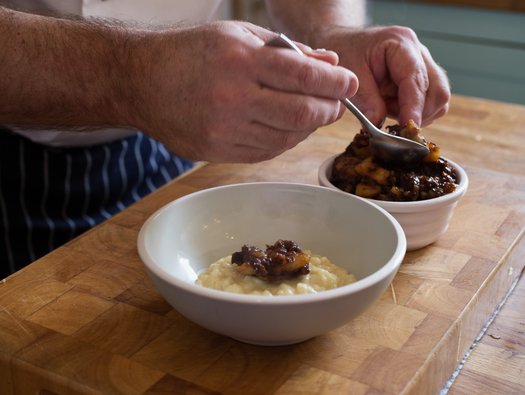Rice pudding with pear and prune compote

A twist on a traditional recipe using soya milk to keep the potassium content low and adding prunes and pears for natural sweetness.

A twist on a traditional recipe using soya milk to keep the potassium content low and adding prunes and pears for natural sweetness.
300g pudding rice
1200ml organic soya milk
410g tin prunes in juice
410g tin pears in juice
1 lemon
½ teaspoon ground ginger
Add the soya milk and rice to a large saucepan and stir while you bring to the boil. Reduce the heat and simmer for 20 minutes or until the rice is soft.
Stir occasionally, scraping the bottom of the pot with a spoon to remove any rice that sticks.
Meanwhile drain the juice from the tinned prunes and pears, discard the juice. Put the fruit into a saucepan with the ginger. Cut and add the juice of the lemon to the fruit.
Heat fruit until it breaks down to a thick sauce. Once cooked serve the rice pudding with a tablespoon of fruit on top.
The pudding rice and fruit compote make this a high carbohydrate dish. The carbohydrate value of this dish has been provided for those who have been trained in insulin adjustment.
When drained, tinned fruit in juice is often lower in potassium than fresh or dried varieties.
Organic soya milk is low in both potassium and phosphate as they don’t contain the additives containing potassium and phosphorous used to fortify standard varieties.
If you have been prescribed a phosphate binder ensure you take it with this dish.
There is the no added sugar in this recipe and soya milk is naturally low in fat.
Keep any leftovers in the fridge for 2 days in an airtight container and serve cold or reheat.
By giving us your email address, you're giving us permission to send you the latest news from Kidney Care UK. Further information about how we protect and use your personal data is available in our Privacy policy. If you would like to change the way we communicate with you at any time please email [email protected]. You can unsubscribe at any time by using the link at the bottom of every email we send.